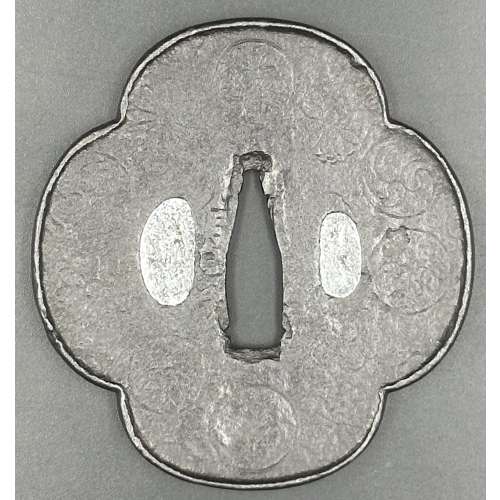Hardcover, light grey cloth with brown lettering and two-colour vignette in the central panel, lettering to spine, 15 woodcut headpieces to each book and 5 full-page two-colour woodcuts by Leonid Feinberg (1896-1980). Size: 25.5 x 18.5 cm; collation: 8vo.
Frontispiece (grey and black): P. OVIDII NASONIS |
METAMORPHOSEON | LIBRI | {XV in frame} | ACADEMIA ||
Title-page (grey and black): П. ОВИДИЙ HAЗOH |
МЕТАМОРФОЗЫ | ПЕРЕВОД | С. В. ШЕРВИНСКОГО | СТАТЬЯ О ТВОРЧЕСТВЕ ОВИДИЯ | А. И. БЕЛЕЦКОГО | РЕДАКЦИЯ И КОММЕНТАРИИ | Ф. А. ПЕТРОВСКОГО | {vignette / 1937} | ACADEMIA ||
Imprint: Переплет, иллюстрации, заставки | и титульные страницы по рисункам | Л. Е. Фейнберга ||
Published: II-1937; print-run: 5,300 copies.
Pp.: [i-vi] vii-xxix [xxx] [2] 3-358 [8], total 396 pp: i/ii publisher’s device/blank, iii/iv blank/frontis., v/vi t.p./imprint, vii-xxx text preface, 1/2 h.t./blank, 3-330 text,331/2 h.t./blank, 333/59 commentary, 360 summary, 361/2 table of contents/blank, 363/4 errata/blank, 365/6 colophon/blank. Collation: ffl, i
8 ii
7 1-22
8 23
7, ffl, total 198 leaves plus 5 full-page two-colour woodcuts extraneous to collation.
Publius Ovidius Naso [Ovid] (Roman, 43 BC – AD 17/18) – Author.
Белецкий, Александр Иванович (Ukrainian, 1884 – 1961) – Author (foreword)
Петровский, Фёдор Александрович (Russian,1890 – 1978) – Author (editor)
Шервинский, Сергей Васильевич (Russian, 1892 – 1991) – Translator
Фейнберг, Леонид Евгеньевич (Jewish-Russian, 1896 – 1980) – Artist
References:
[
LIB-2679.2021] Ovid’s Metamorphoses in Fifteen Books / Translated by the Most Eminent Hands. — London: Jacob Tonson, 1717.
[
LIB-2586.2020] Ovid’s Metamorphoses in Latin and English (2 vols.) — Amsterdam: Wetstein & Smith, 1732.




















